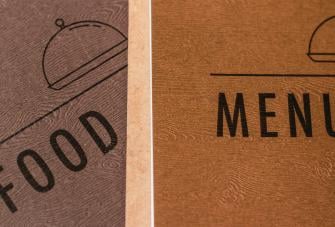New Hire Checklist for Restaurant Employees
After rounds of interviews and comparing candidates, you’ve finally hired a new staff member for your business. Now comes the task of molding your new hire into the perfect employee.
With the right restaurant employee onboarding checklist, you can efficiently get your new staff members up to speed and ensure all your bases are covered.
Restaurant onboarding timeline
The average hire will take several weeks to learn the fundamentals of your business. It’s important that you start slowly and make sure each topic is covered before proceeding with the next. As the saying goes, “Slow is smooth. Smooth is fast.”
That said, training needs to progress as quickly as possible. As you create your restaurant employee onboarding checklist, plan for the full process to take up to 90 days.
Restaurant employee onboarding checklist
The following tasks will help you cover the Four C’s of onboarding:
- Compliance: Your company rules, policies, and procedures.
- Clarification: An understandable outline of job requirements.
- Culture: An overview of the why and how behind your restaurant.
- Connection: A demonstration of the importance of teamwork and communication.
If you address each of these topics, you can improve employee engagement and retention.
Paperwork
Before your employee touches anything, you need to ensure all legal matters are covered.
To start, provide your new hire with W-4 and I-9 forms. These determine how much tax should be withheld from their pay and verify their citizenship status. You will need to report this information when you register your employee with local and federal tax authorities.
Next, provide your new hire with a copy of your employee handbook and other company documents. Have them sign each document to confirm they understand what is expected of them. Make copies of all forms - you never know when you might need them.
Salary + Benefits
As you review your paperwork, make sure you and the new restaurant employee are on the same page regarding salary and benefits.
- How much will your employee earn per hour?
- Are they permitted to accept tips? If so, how are tips split among staff?
- How often are employees paid?
- Do you offer direct deposit?
Depending on your restaurant’s size and the type of worker you’re employing, you may be obligated to offer some benefits like healthcare. Make sure you fully explain these programs to your new staff to stay in compliance with state and federal laws.
Lastly, many restaurants offer free meals while working and discounted meals when not on the clock. If so, make sure you provide any documentation needed to receive these discounts and explain any limitations on the offer.
Policies
Outlining your expectations is one of the most important aspects of restaurant employee onboarding. You want to make sure your workers are on the same page and clearly understand what is acceptable at work.
Check of these topics during onboarding:
- Schedule and Hours: Who sets the schedule? How many hours per week are expected? Can employees trade shifts?
- Appearance: Do workers need to wear a uniform? Is there a dress code? Are there any rules regarding piercings or tattoos?
- Meetings and mandatory training: Do you ever have weekly meetings? Are employees expected to receive certifications or attend training classes?
- Chain of Command: Who does the new hire report to? Where can they direct questions or escalate urgent issues?
- Social media: Can the employee talk about your business online?
Equipment
Before your employee can take orders or prepare meals, they need to know how to operate all necessary equipment.
Nothing is more important than your point of sale. Your front of house restaurant staff should understand the basics of operating your terminals, especially those who process orders or take stock.
Your restaurant POS system is vital for:
- Preparing orders: All orders are tracked through the system and are sent directly to the kitchen display.
- Processing payments: Use your till to accept cash, card, and contactless payments.
- Inventory management: Stock levels are automatically updated after each sale.
- Tracking time: Employee hours are all logged through, so you can see when someone worked and what orders they processed.
- Accounting and taxes: With QuickBooks and Xero integrations, you can easily export and analyze your financials.
After training on your terminal, you will also want to cover peripherals and handheld devices. If you provide tableside ordering, review how to send orders to the kitchen, split bills, and more.
If your employees will work in the kitchen, train them on using appliances and other tools. Even if they have a restaurant background, you want to make sure they learn how to operate your specific equipment. Failure to adequately train your new hires can lead to minor issues like poor food quality to large problems like injuries.
On-the-job training
Practical experience is crucial when it comes to onboarding new restaurant employees. Stary by assigning a trainer to work with your new hire.
A more experienced employee can help the new staff member learn the basics of how your business operates. For the first few days, your new hire can shadow another worker and observe their routine. By day 3, the new worker can work semi-independently under the watchful eye of their trainer.
Key topics this OTJ training should cover include:
- Sales skills: How do servers promote special offers? Do you have cues for suggestive selling?
- Opening and closing procedures: Who holds the keys to lock up at night? What happens at the end of each shift?
- Coworkers and teamwork: Which team members can help with which issues? Do coworkers socialize in their downtime?
Assign homework
While the new hire should never work off the clock, you can give them some “homework” to help them prepare for their role. For example, servers may need to study the menu and learn what goes into making each meal. This time could also be used to take online courses, such as those related to safe food handling and customer service.
If you assign these tasks, be sure to compensate for the time it takes.
Plan 30-day evaluations
After the first few days, your new worker will establish a rhythm and feel comfortable at your restaurant. With time, you can shift your focus from initial training to ongoing development. To achieve this, schedule employee development meetings for the first 30, 60, and 90 days.
Before these meetings, set goals for your new hire. These could be as minor as learning to operate independently or as complex as selling a certain amount of meals.
Focus on these topics during your meetings:
- Evaluate growth: Did your new restaurant employee meet their goals? Are they feeling comfortable in the role?
- Address concerns: Is the new hire having problems? Do they have questions they are afraid to ask?
- Look for development opportunities: Does this employee plan to stay with you for a while? Can you create a plan to eventually promote the employee?
Speed up Your Onboarding Process with Epos Now
The Epos Now point of sale system blends style with functionality, making operating the till a breeze. With our implementation team’s help, your new restaurant employees can learn how to use the POS in under 15 minutes.




